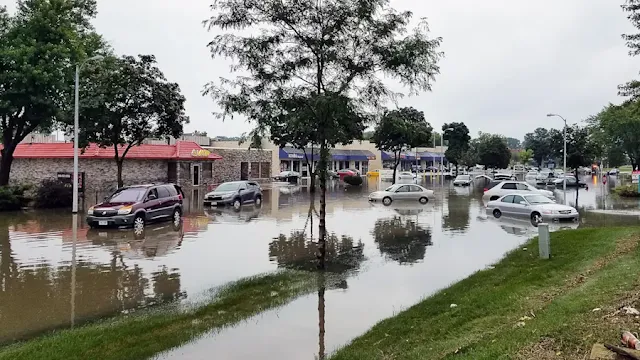Flood Damage vs. Water Damage: Key Distinctions Explained
When it comes to home disasters, understanding the difference between water damage and flood damage is crucial. Both can cause significant harm, but they are treated differently by insurance companies and require distinct preventive measures. For instance, imagine a heavy rainstorm leads to a leaky roof, resulting in water seeping into your living room. This is considered water damage. On the other hand, if a nearby river overflows and inundates your basement, that’s flood damage.
Water damage is typically covered by standard home insurance policies, while flood damage requires separate flood insurance.
Knowing the distinction can help you better navigate insurance claims and take appropriate action to protect your home.
What is Water Damage?
Water damage typically occurs from internal issues within your home, such as burst pipes, leaky roofs, or faulty appliances. It is usually covered by standard homeowner's insurance policies. Examples include:
- A washing machine hose bursts, flooding your laundry room.
- A roof leak during a rainstorm damages your ceiling.
- A broken water heater floods your basement.
What is Flood Damage?
Flood damage, by contrast, is caused by external natural events where water inundates your home. Standard homeowner's insurance does not cover this; flood insurance is required. Examples include:
- A river overflows its banks and floods your house.
- A storm surge from a hurricane inundates your home.
- Heavy rainfall leads to flash flooding in your area.
Insurance Coverage Differences
Water Damage:
- Generally covered by standard homeowner's insurance.
- Includes damages from plumbing issues, appliance leaks, and roof leaks.
Flood Damage:
- Requires a separate flood insurance policy.
- Covers damages from natural flooding events, such as heavy rain, overflowing rivers, and storm surges.
Preventive Measures
For Water Damage:
- Regularly inspect and maintain plumbing.
- Ensure your roof is in good condition and repair leaks promptly.
- Install water leak detectors near appliances.
For Flood Damage:
- Elevate electrical systems and appliances in flood-prone areas.
- Install flood barriers or sandbags during heavy rains.
- Consider landscaping changes to direct water away from your home.
Handling Damage
Water Damage:
- Act quickly to stop the source of water.
- Dry out affected areas immediately to prevent mold.
- Document damage and contact your insurance company.
Flood Damage:
- Wait for waters to recede before entering your home.
- Wear protective gear when assessing damage.
- Document everything for your flood insurance claim.
Understanding the differences between water damage and flood damage is essential for protecting your home and making informed decisions about insurance coverage. Water damage is typically covered by standard policies, while flood damage requires separate insurance. Taking preventive measures can minimize risks and ensure you’re prepared for any situation.










